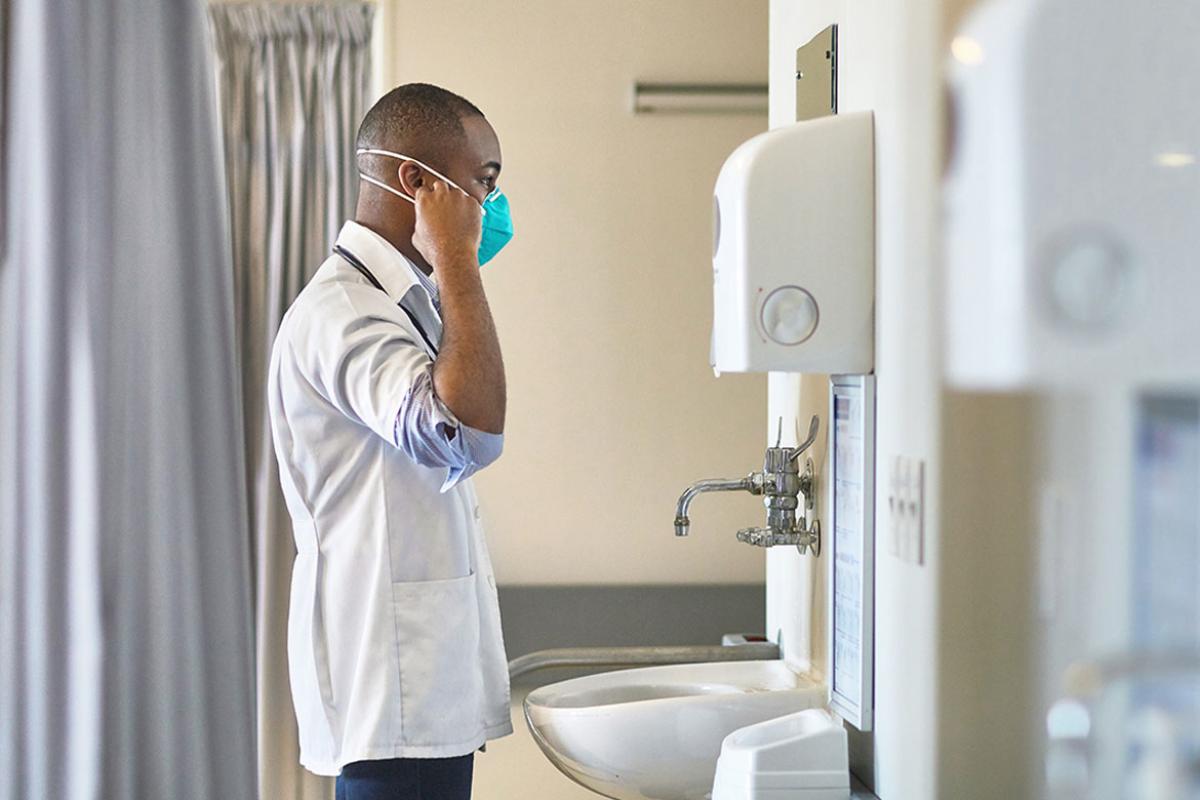As a medical student, do you ever wonder what it’s like to specialize in internal medicine? Meet Lexie Graham, MD, an internal medicine specialist and a featured doctor in the AMA’s “Shadow Me” Specialty Series, which offers advice directly from physicians about life in their specialties. Check out her insights to help determine whether a career in internal medicine might be a good fit for you.
The AMA Specialty Guide simplifies medical students’ specialty selection process, highlights major specialties, details training information, and provides access to related association information. It is produced by FREIDA™, the AMA Residency & Fellowship Database®.
Learn more with the AMA about the medical specialty of internal medicine.
“Shadowing” Dr. Lexie Graham
Specialty: Internal medicine.
Practice setting: Multispecialty group practice.
Employment type: Partner in a practice in Central Washington affiliated with Confluence Health, which is a member of the AMA Health System Program that provides enterprise solutions to equip leadership, physicians and care teams with resources to help drive the future of medicine.
Years in practice: Seven.
A typical day and week in my practice: I generally get into the office around 7:30 a.m. to do some in-basket work or paperwork so I can be ready to see my first patient at 7:50. Between then and around 5 p.m., I am seeing patients for a variety of issues ranging from chronic-disease management and preventive care to acute concerns. Every day, and every patient, brings a new challenge, which ensures that the work is never boring.
The average age of my panel is mid-70s, therefore most of my patients have complex and storied medical histories and life stories, so I never know what the day will bring! I also have an administrative role as the medical director of education for my organization, so I often have a medical student with me in clinic, which offers another fun perspective and opportunity for teaching.
I work a four-day week in clinic, which allows time for my administrative work as well. I am typically on call around three days per month, where I cover our department’s patients and local nursing home patients, but this is purely a phone call, with no need to make trips into the hospital or nursing home.
The most challenging and rewarding aspects of internal medicine: One of the most challenging—and the most rewarding—aspects of internal medicine is the complexity of our patients. This can at times be daunting, but it is also incredibly intellectually stimulating.
While we thankfully have support from our wonderful subspecialist colleagues, in primary care you are the quarterback of a patient’s care, ensuring things aren’t being missed, coordinating between different issues, acting as the patient’s advocate and educator, and ultimately ensuring that the patient and their goals of care are at the center of what we are focused on as a medical team.
Overall, the relationships we form with our patients, based on trust and rapport built over time, are what feels the most rewarding.
The impact burnout has on internal medicine: Sadly, burnout is a real problem in medicine, and in primary care in particular. While it is incredibly rewarding to be patients’ primary source of support within the medical system, it also leads to an immense amount of responsibility, as well as a lot of work outside of the exam room.
In primary care, we are faced with the challenge of balancing the needs of our entire patient panel along with administrative burdens, such as paperwork and the EMR—which includes test results, patient messages, telephone calls, refill requests and communications with other providers—all within a limited amount of time to provide the best care possible to our patients. Often, this can lead to work needing to be done outside of the regular workday, which can contribute to burnout if not kept in check.
How Confluence Health is reducing physician burnout: Our health system and physician group do work hard at trying to reduce physician burnout within our organization. Our medical group has provided access to WorkLife Concierge to help with work-life balance. We also have a director of physician experience who is a physician with dedicated administrative time to lead efforts to support both physicians and nonphysician providers. That includes organizing events, providing coaching and working with departments to help improve engagement and reduce burnout.
How my lifestyle matches, or differs from, what I had envisioned: I’m a second-generation primary care internist. I grew up seeing my father work as a primary care internist within the same health system where I currently work, so I luckily had a fairly realistic idea of what this lifestyle would be like. Certainly, things have changed over the years within primary care. My father had a traditional practice for most of my childhood, following his patients in and out of the hospital, whereas now I—and most primary care internists—practice a solely outpatient career. There are both pros and cons to the more segregated hospitalist or primary care careers compared with traditional primary care careers, but, overall, I do think that my solely outpatient career does allow for better work-life balance.
Otherwise, the demands of the EMR around charting, communication with patients, etc., has also significantly changed over the years between my father’s career and my own, which adds a different element to daily workload as well. There are wonderful advantages to the ease of accessing information and communicating with colleagues and patients that the EMR affords, but it also does increase the amount of time needed to document and manage the many different parts of the asynchronous care that is required of primary care providers outside of the time we spend in the exam room with patients.
Skills every physician in training should have for internal medicine but won’t be tested for on the board exam: One of the most important skills that is required for all physicians but is especially important in primary care is effective communication—building rapport and trust with our patients. Medicine is increasingly complicated; there are nuances to testing, diagnoses, treatment plans, etc., and the choices that patients are faced with are similarly complex and often not black and white. Furthermore, in our current society there is increasing misinformation and distrust fostered between individuals and the health care system.
It is our job as primary care physicians to make sure that our patients feel heard, understood, and respected. It is also our job to make sure that we can communicate the nuances of our patients’ medical diagnoses or treatment options in ways that they can understand, feel safe to ask questions and have a conversation that includes, and respects, their individual goals of care. This type of communication takes a lot of practice, and these types of relationships take time and work to cultivate. You won’t be tested for these skills on your multiple-choice board exam, but these are the skills that will help you most effectively partner with your patients and feel proud of the way you care for them.
One question physicians in training should ask themselves before pursuing internal medicine: “How comfortable am I with uncertainty?”
Contrary to working in a subspecialty of medicine, in primary care we are often the first access point of care for patients. They will come to you with a whole host of symptoms—an “undifferentiated problem”—and it will be up to you to decide what is or isn’t concerning and what are the best next steps. In primary care we also have to know about a wide range of issues encompassing every organ system and specialty, as well as to be comfortable enough to know our own knowledge limitations—i.e., when we can manage things on our own versus when we need to refer for subspecialty support.
Books, podcasts or other resources every medical student interested in internal medicine should be reading:
- Being Mortal: Medicine and What Matters in the End, by Atul Gawande, MD, MPH. I consider this a must-read for everyone. It explores what is important for us all in life and death, how to have the hard conversations about what really matters, and how we can help our patients in their most difficult and vulnerable moments.
- “The Curbsiders” internal medicine podcast. This is a great podcast, where they talk about internal medicine topics in a fun and digestible way that is really helpful for brushing up on a variety of topics.
- The JAMA® “A Piece of My Mind” series. This is “devoted to telling stories about the joys, challenges, and hidden truths of practicing medicine in the modern era.” It’s a great way to hear really touching stories from real-life physicians who are living and breathing medicine—the good and bad and the ups and downs—and sharing it in a heartfelt way with their colleagues.
Additional advice I would give to students who are considering internal medicine: Primary care is such an important part of medical care and is likely to change dramatically as we transition to value-based care over the next few decades. We will need more engaged, enthusiastic, and ethical minds in the field during this transition, so I urge more medical students to consider this field. It is such a rewarding experience to build these deep and long-lasting relationships with patients and to help people not only improve their health immediately but also to build healthy futures for themselves.



